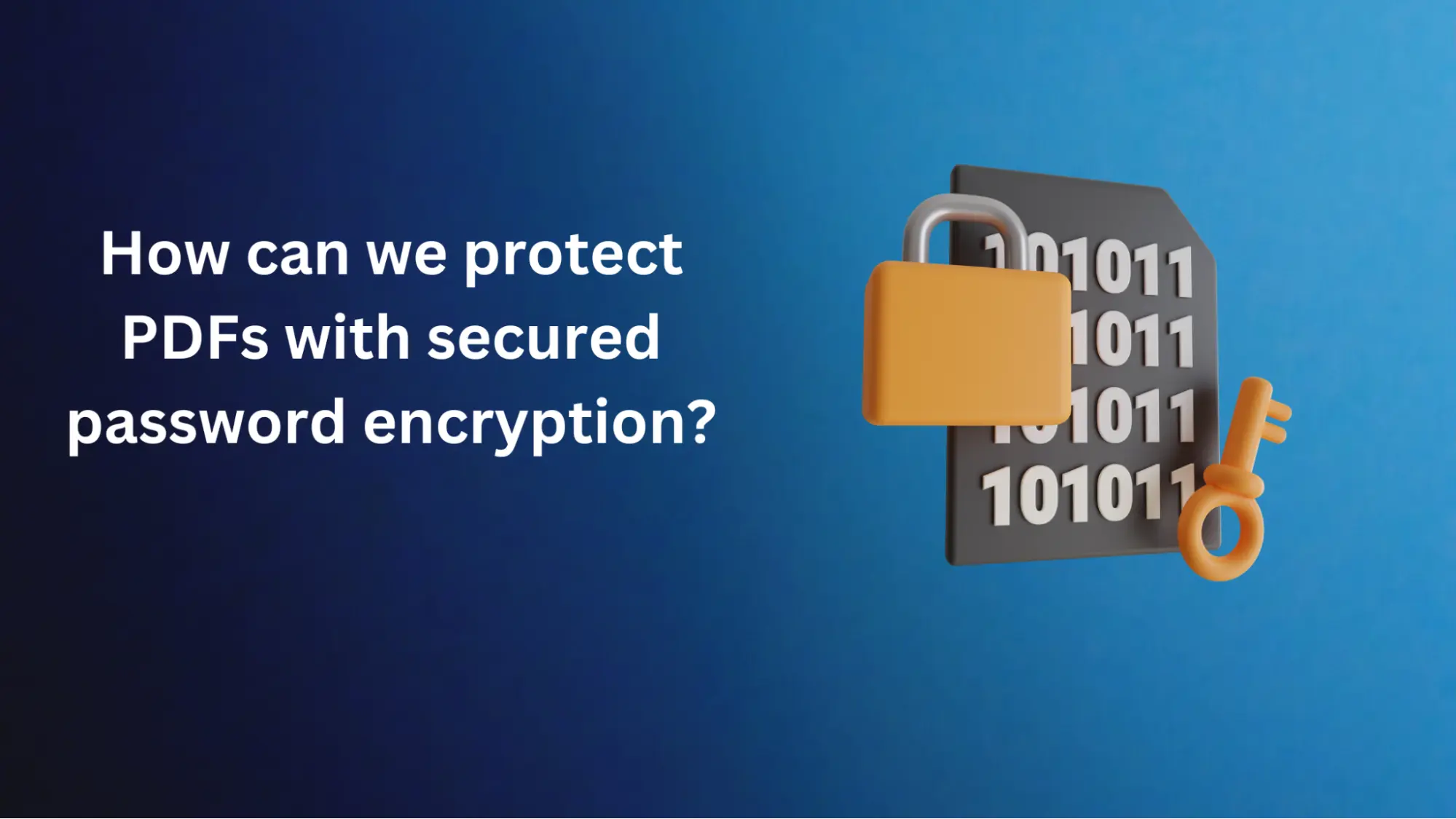How can we protect PDFs with secured password encryption?

One of the best ways to achieve this is by utilizing password encryption, a vital security measure that adds a secondary layer of security to your PDF files. This comprehensive guide will focus on the importance of encryption in PDF, its different methods, and practical advice for protecting sensitive data.
Why Are Encryption of Your PDFs Needed?
On most occasions, PDF files encompass financial statements, legal documents, and contracts that everybody needs to understand. Without them, these files could be compromised by unauthorized access and risk to data breach, identity theft and other serious problems. With the passwords protection enabled, no one will be able to read your PDFs without a password.
Setup Password Encryption for PDFs
- Choose a PDF Software: You'll need a PDF software that supports password encryption. Some popular options include Adobe Acrobat, PDFElement, or free tools like PDFEncrypt.
- Open the PDF File: Open the PDF file you want to password protect in your chosen software.
- Access the Security or Encryption Settings: Look for an option related to security, encryption, or password protection. This is usually found under a "Tools" or "Protect" menu.
- Set a Password: You'll typically be prompted to set two passwords:
- User Password (open password): This password is required to open and view the PDF file.
- Owner Password (permissions password): This password allows you to change the security settings and permissions.
- Configure Permissions: Most PDF software allows you to configure permissions for printing, editing, copying content, and other actions. Decide which actions you want to allow or restrict for users with the open password.
- Apply Encryption: After setting the passwords and permissions, apply the encryption to the PDF file. The software will save a new, encrypted version of the PDF.
- Test the Encryption: Open the encrypted PDF and ensure that the passwords work as intended, and the configured permissions are correctly applied.
Best Practices To Secure PDF Password Encryption
Here are some essential practices that will help secure PDF password encryption.
- Use Strong, Unique Passwords:Do not use passwords that are simply common or can be guessed easily. While each advice from the past is true, generate strong, unique passwords that combine uppercase and lowercase letters and numbers. Capture passwords created by password managers designed to be resistant to security cracks. Learn how to choose a strong password.
- Implement Access Controls: Enable PDFs containing the password to be accessed only by authorized persons/groups, not broad. Setting up practices related to sharing and dealing with personal papers in your organization becomes vital.
- Regularly Update Passwords: Rest periodically updates passwords for your own file encryption, especially for files holding critical information. Closely correlating authentication with a person's physical location, such as a pin station near ATMs or bank houses, helps to reduce the threat of unauthorized access to user accounts, even if a password is lost.
- Use Additional Security Measures: While password encryption is a good shield, it's only a shield. For more security, it's wise to add more security, such as digital signature, watermarking, or redaction, to the document.
- Educate Your Team: Ensure that all team members comprehend the significance of PDF security and the importance of following the recommended methods of managing password-protected files.
What are the limitations of securing PDFs with password encryption?
- Password Recovery: If you forget or lose a password for a secured PDF file, you cannot recover it. This point underscores the importance of storing and managing the password safely.
- Brute Force Attacks: Ultimately, adding a password keeps our PDF file safe, but ensuring the password is strong enough is essential. Many online tools are available that try different combinations of passwords until the correct one is found.
- Compatibility issues: Some old software needed help to recognize this advanced way of securing password-based PDF files. There will be some compatibility issues, and it will become difficult to access encrypted PDFs.
- Human Error: Despite keeping your files safe with a password, one of the most common errors humans make is sharing a password with someone or leaving their sensitive file unattended. This compromises the security of PDFs.
Conclusion
Protecting sensitive PDF documents is mandatory in this digitalized era. Password encryption can be the best choice to defend against unauthorized access. Users can add more protection to their files by implementing effective security measures. Using a tool could be a great solution that will help maintain the confidentiality of your valuable documents.
Remember, adequate PDF security is an ongoing process that requires vigilance, regular updates, and a comprehensive approach to safeguarding your organization's sensitive data.
